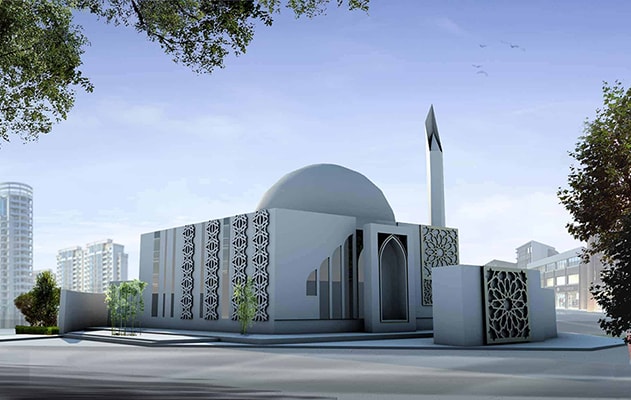The emergence of Islamic civilization as a witness to the greatest nation
The emergence of Islamic civilization as a witness to the greatest nation,
Islamic architecture, as one of the manifestations of civilization, characterized Islamic history,
and this architecture is still a witness to the greatness and humanity of this civilization.
It was not limited to mosques and homes only, but extended to include schools, fountains,
and even castles and forts.
This indicates the interest of Islamic civilization in all aspects of economic and social activity, as well as military activity.
Islamic architecture combined various other forms of arts,
to the extent that the Greeks considered Islamic architecture the mother of all arts.
The birth of Islamic civilization
Islamic architecture arose in its infancy as a simple craft of building in its simplest forms,
and then developed until a different group of architectural arts emerged from it.
Architecture is the mirror that reflects people’s hopes, scientific capabilities and high taste,
so it is one of the most important manifestations of civilization.

The relationship between plastic art and architecture
Historians consider architecture a structural work formed to show the images of the arts,
and they also considered it the mother of the arts,
as it was concerned with sculpture and painting according to the surrounding environment.
Then the arts, shapes, and raw materials varied.
The emergence of Islamic civilization as a witness to the greatest nation
After that, various decorations and all kinds of sculpture were used, such as wood and gypsum sculpture.
The Muslim artist made good use of his abilities and innovations, so domes, vaults, and others appeared.
Elements used to decorate Islamic buildings
There are many elements that were used to decorate Islamic buildings, such as plant motifs,
inspired by the leaves and stems of trees, after they were developed by Muslim architects.
It also used geometric motifs such as straight, curved, and refracted lines, as well as geometric shapes such as triangle, square and oval.
In addition to calligraphic decorations, which include Arabic calligraphy of all its different types such as Farsi, Diwani, Thuluth and others.
Here it is worth noting that there is a close connection between Arabic calligraphy and the Islamic faith,
and Muslim architects also used architectural decorations, derived from architectural forms such as columns, minarets and doors.
Aesthetic values in Islamic architecture
The aesthetic values of the elements of Islamic architecture are more prominent in the various Islamic decorations,
which covered a large number of different Islamic buildings.
This was realized by the Muslim architect, which is evident in particular through the use of calligraphic decoration.
The calligraphic decorations took different styles of writing, smooth movement,
homogeneity of letters, and clarity in the human aspect.
These values were represented by the hand that wrote and coloring, and the introduction of some technical components,
some of which adhered to the clarity of the font to facilitate reading.
Some of them used words in reversed or inverted positions as a matter of artistic beautification,
and so in every form of art looking for the aesthetic aspect in it.
You may like: Using the elements of Islamic architecture in building mosques





